Top 10 Glorious Abandoned Buildings In The World
 |
| Top 10 famous abandoned buildings in the world |
| Table of Contents |
Whether it's an urban legend or the real thing, every abandoned building has a tale about how it came to be in that condition. Abandoned buildings can be fascinating and eerie at the same time, whether they are crumbling, rotting, or fully taken over by nature.
Nothing is more eerie than an abandoned, once-magnificent building. While some abandoned buildings have been well-maintained, others are in total disrepair and have completely lost their original appearance. Even the natural world occasionally takes back abandoned structures.
Here is top 10 famous abandoned buildings in the world.
10. Beelitz Military Hospital
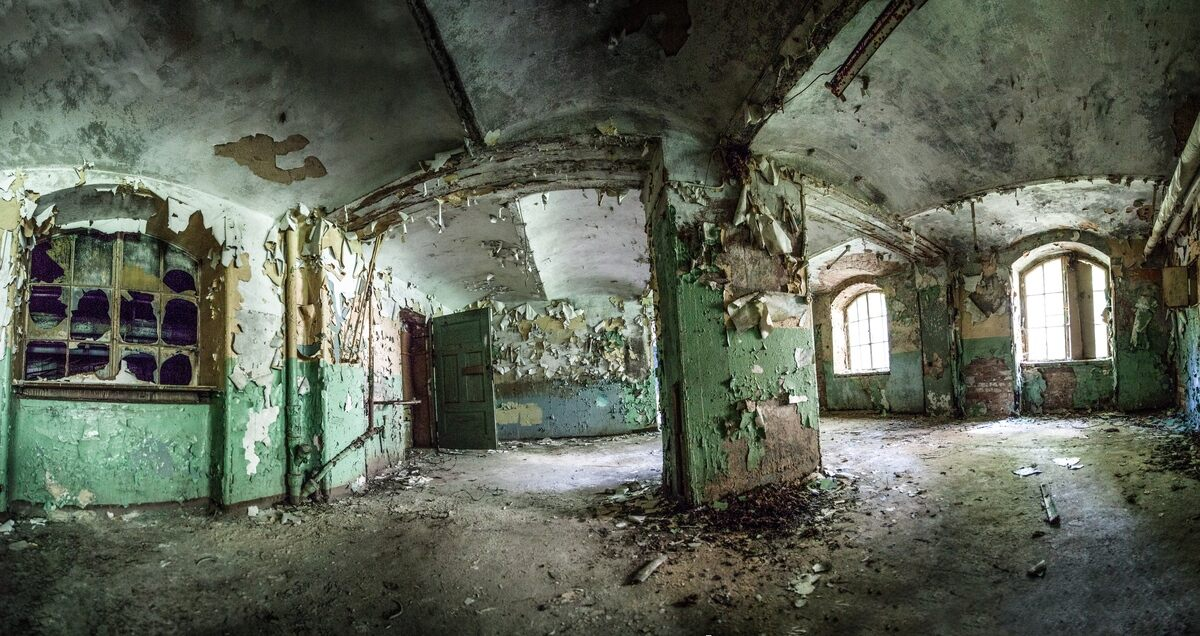 |
| Beelitz Heilstätten WENDELIN JACOBER (CC BY 2.0) |
This abandoned hospital complex, comprising about 60 buildings, is situated in the Beelitz Heilstatten neighborhood and was constructed in 1898. The complex housed patients with lung diseases between 1898 and 1930; most of them had tuberculosis, a disease that was then fatal.
It functioned as a field hospital in World War I, treating the first victims of novel weapons like machine guns and mustard gas. A young soldier named Adolf Hitler was also treated during this period. He had received the Iron Cross for his actions at the Battle of the Somme after being injured in the leg and rendered blind by a British gas attack.
Paradoxically, these encounters along with his effective care would pave the way for the hospital to be utilized as a field hospital during WWII, caring for injured Nazi soldiers. It was taken over by the Russians in 1945, and for the next fifty years—until 1995, when the Berlin Wall had fallen—it functioned as a Soviet military hospital. From Communist party members to the disgraced head of the East German government, who was sent there after being driven out in 1990, the hospital provided care for all of them.
While some small portions of the massive hospital are still in use today for Parkinson's disease research and neurological rehabilitation, the majority of the complex—which included a rifle range, a psychiatric ward, and a surgery ward—has been abandoned and allowed to revert to the surrounding forest. It served as a set for Roman Polanski's 2002 film "The Pianist."
The complex was a favorite spot for urban exploration, inebriated teenagers, and individuals seeking a good scare because it was unguarded until 2015.
A canopy pathway was installed in 2015, enabling visitors to see the ruins from every angle without having to go inside. These days, it serves more as a tourist attraction than an adventure. However, it still has charm and is now completely accessible to those with walking impairments.
9. Battersea Power Sation
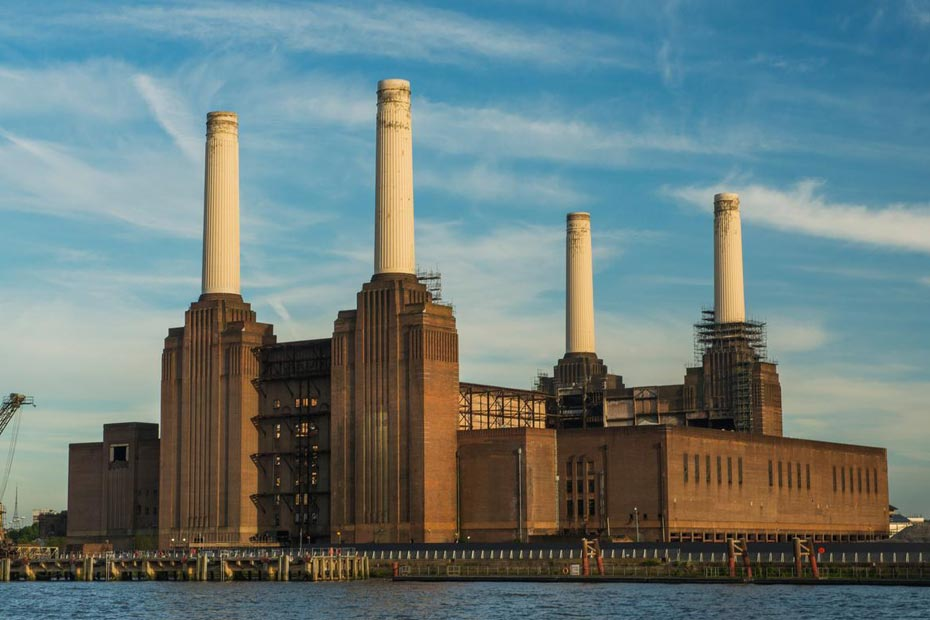 |
| Photo: Worldabandoned |
One of the most famous power plants in the world is Battersea Power Station, which is located in Nine Elms, London, England, on the south bank of the River Thames. The structure consists of two nearly identical power plants that were constructed in phases to form a four-chimney building. Between 1975 and 1983, it was decommissioned, and it sat empty until 2014.
In London, power was generated at several small businesses up until the 1930s, selling the excess electricity to the general public and supplying it to industry. They all employed various voltage and frequency standards. A nationalization of the electricity industry was proposed in 1925. In retaliation, several of the smaller businesses established the London Power Company and decided to adhere to a single standard.
The London Power Company started preparing for the first of several sizable power plants in Battersea, on the south bank of the River Thames. The location was once home to reservoirs owned by the Southwark and Vauxhall Waterworks Company, and it was considered advantageous for coal delivery along the river.
Sir Giles Gilbert Scott, best known for creating the Liverpool Anglican Cathedral and the red phone box, designed the structure. The Tate Modern art gallery is currently located in Bankside, another one of his power plant designs. The goal of the design was to include cutting-edge techniques to lower smoke and produce cleaner emissions.
In March 1929, work on the first station, Battersea A, got underway. Although power generation started in 1933, the structure wasn't finished until 1935. Accidents on the job site during construction claimed the lives of six construction workers. Due to World War II, construction on Battersea B was postponed and started shortly after. Completed in 1955, it was a mirror image of A Station. When combined, they created the well-known four-chimney layout. A fifth of London's electricity requirements were met by the 509 megawatts of generating capacity. By this point, Battersea Power Station was owned by the British Electricity Authority, and the UK had nationalized its electric power industry.
8. Canfranc Rail Station – Spain
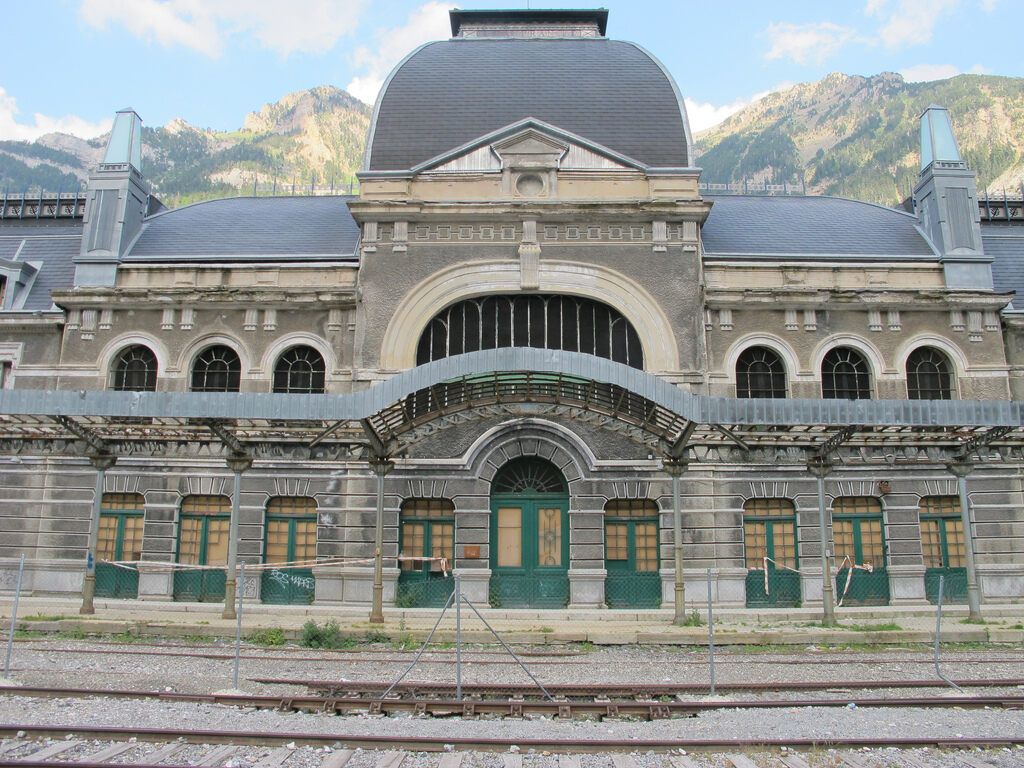 |
| JAKOB BAUER/WIKIMEDIA |
The hub of a railroad connecting France and Spain, THE CANFRANC INTERNATIONAL RAILWAY STATION was the largest rail hub in Europe in 1928. The Spanish government wanted to draw wealthy travelers from all over the continent to the station's hotel, so it made the hotel opulent and extravagant.
Despite its splendor, the opulent station was forced to close in 1970 due to a train accident, Naziism, and war.
Jews who were able to flee via the railway and station in the early stages of the war used the train as a lifeline, but by the early 1940s, the Nazis had taken over, and a Swastika was flying over the Art Nouveau station. Gold stolen from murdered Jews was transported from occupied France to Portugal and Spain by rail while under Nazi rule. These same tracks were used by Nazi war criminals who escaped through allied hands after the war.
After years of conflict, the station eventually resumed operations in the 1950s and 1960s, but its demise was imminent. A massive steamer crashed after jumping the rails in 1970. Although there were no fatalities, the accident essentially stopped the train. With the station's gradual abandonment, the building's slowly deteriorating state entered a new chapter.
The station's isolation and abandonment in 1985 created a new opportunity that resulted in the current, and possibly greatest, iteration of the historic train station. With plenty of underground space, Spanish physicists established the Canfranc Underground Astroparticle Laboratory, which has movable labs set up on the former railway tunnels and an entrance beneath the station.
The graffitied and broken-in station will probably stay deserted until it eventually disintegrates or is destroyed, even though there have been discussions about reopening it.
 Top 10 Oldest Buildings In The World - The First Buildings Top 10 Oldest Buildings In The World - The First Buildings Keep reading the detailed article below for the list of top 10 oldest buildings in the world - The First Buildings. |
7. Chateau Miranda
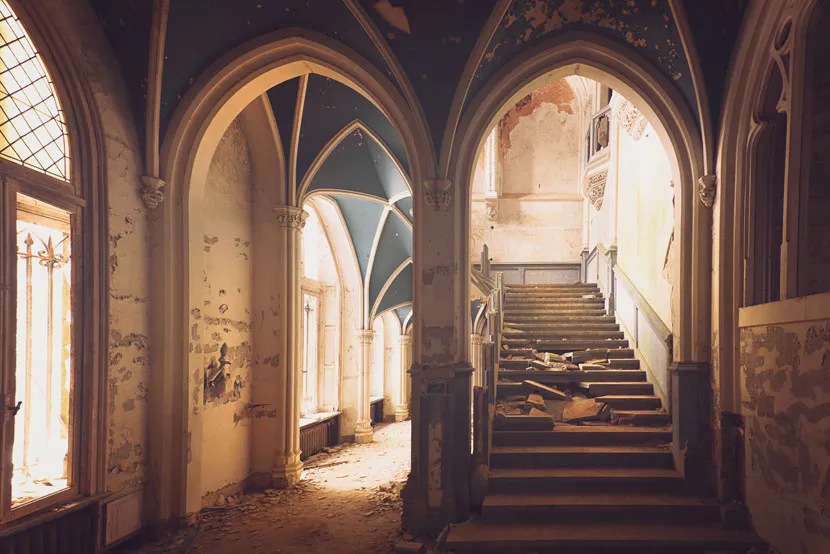 |
| Photo: David Baker |
In the Belgian province of Namur, close to the tiny village of Celles, sits the neo-Gothic Château Miranda. The castle, sometimes referred to as Château de Noisy (Noisy Castle), is a priceless gem that is tucked away in the hilly and wooded Ardennes region. Regretfully, it has been totally neglected since 1991. The castle is in extremely poor shape now, with its interior especially crumbling and destroyed.
While the distinctive facade with its fairy tale-like appearance still stands proudly, there are sadly no known restoration projects for this building. The conical Gothic roof peaks on the castle were removed in October 2016 after the owners formally applied for a license to demolish it in December 2013. The stunning castle has already had half of it demolished; however, the project was abandoned for unspecified reasons, and the castle is now gradually collapsing on its own. Once that happens, its allure will only endure in people's recollections. Every thing has a beginning and an end of its own. That also applies to Château Miranda.
Originally intended as a housing complex for French aristocrats fleeing the guillotine, Château Miranda was constructed. The politically engaged and king-loyal Liedekerke-De Beaufort family was forced to flee their former residence, the Veves Castle in the southern Belgian Wallon region, during the French Revolution. They chose this spot to construct their new summer home after years of hiding. Victorian garden movement favorite and trailblazing English architect Edward Milner began construction on the property in 1866. He passed away while the work was still being done.
The family occupied the castle right up until the start of the Second World War. During the Battle of the Bulge, there was some fighting close to the castle, and German soldiers briefly occupied Château Miranda. Actually, in 1950, the National Railway Company of Belgium (NMBS/SNCB) seized control of the castle following the war.
They fully abandoned the mansion in 1991. After years of looking, they were unable to find any buyers or innovators to turn the mansion into a five-star hotel. At the last minute, the owners rejected even the prospective buyers who wanted to finally take it over.
Since then, there have been numerous severe vandalism incidents at the castle. A significant portion of the roof and other building components were destroyed by fire in 1995. The family did not want to conduct any additional investigation, and the cause of the fire is still unknown. The intricate interior decorations and other priceless antiques were taken out and used in another mansion.
6. Olympic Bobsleigh And Luge Track
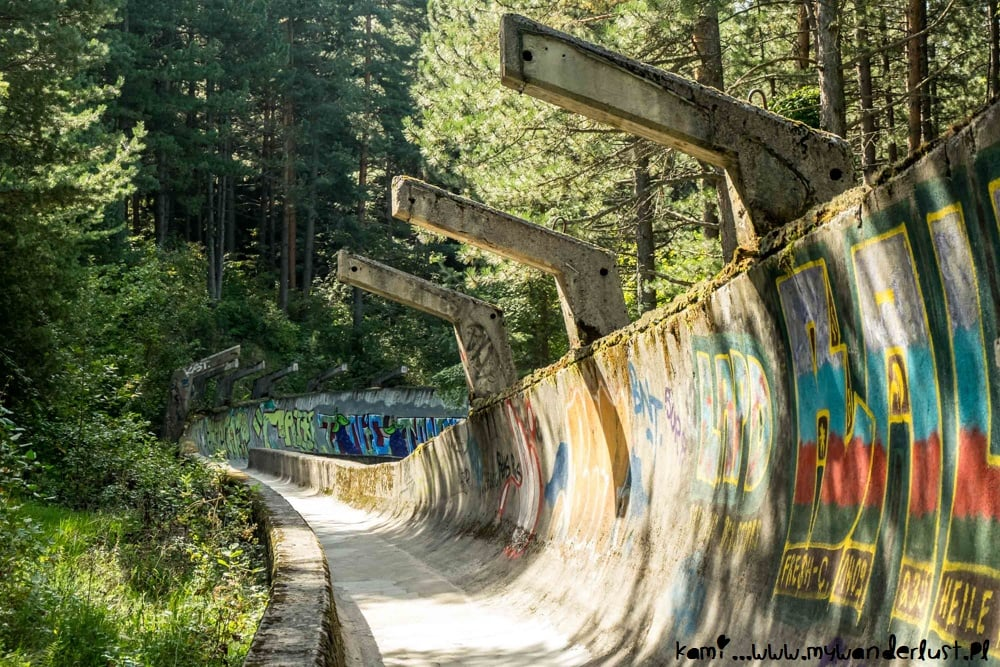 |
| Photo: Mywanderlust |
Built for the 1984 Winter Olympics, the Trebević mountain provides a stunning view of Sarajevo from the Olympic Bobsleigh and Luge Track.
A bobsleigh and luge track was suggested when Sarajevo was chosen to host the 1984 Winter Olympics in 1977. Following approval of the track design in 1981, construction got underway on June 1st of that same year. On September 30, 1982, the track's assembly was finished, at a cost of YUD 563,209,000. The European Bobsleigh Championships in January 1983 were the track's first major international competition. There were 30,000 bobsleigh spectators and 20,000 luge spectators at the 1984 Games. The track hosted World Cup competitions following the Winter Olympics until 1991, when the Yugoslav wars broke out, encompassing the Bosnian War the following year. The Sarajevo Siege caused damage to the track since Bosnian Serb forces utilized it as an artillery position during the siege. As of January 2018, the track was mostly still in place, although one of the course's final turns has defensive fighting holes drilled into it as a war wound.
Between the end of the war and the start of the renovations in 2014, the track was utilized for cycling and graffiti. The track was restored starting in June 2014, with overgrowth and graffiti removed and a protective coating applied from Start 1 to the bottom of the course. Currently, summer luge training and other summertime activities take place on the track.
5. Sanzhi Pod Houses
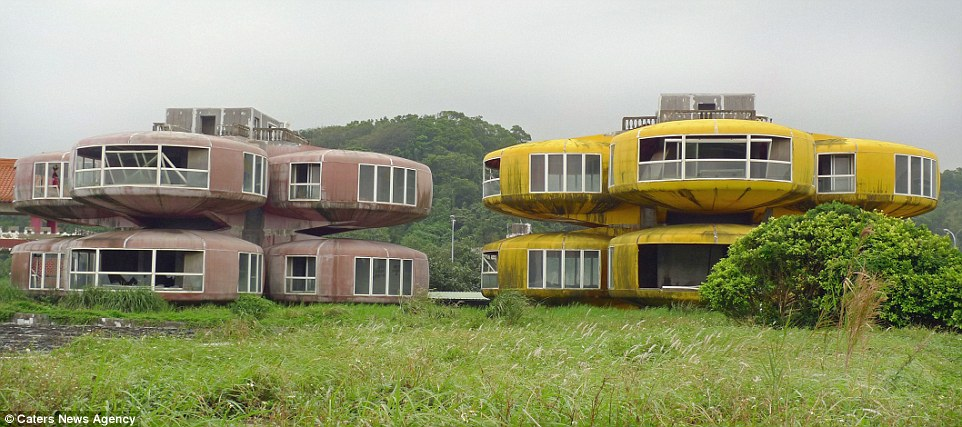 |
| Photo: Carters News Agency |
The Sanzhi UFO houses, sometimes referred to as the Sanzhi pod houses or Sanzhi Pod City, were a group of deserted pod-shaped structures that bore a striking resemblance to Matti Suuronen's prefabricated flying saucer-shaped Futuro houses.
Construction on the UFO houses started in 1978. They were marketed to U.S. military officers returning from their postings in East Asia with the intention of serving as a vacation resort in an area of the northern coast next to Danshui. However, a series of deadly automobile accidents during construction and lost investments led to the project's abandonment in 1980.
Even though there was an internet petition to keep one of the buildings as a museum, the buildings were supposed to be demolished in late 2008. On December 29, 2008, demolition work on the property started with the intention of turning it into a tourist destination with lodging and beach amenities.
 Top 20 Most Beautiful Buildings In The World Top 20 Most Beautiful Buildings In The World Let's check out this interesting list of top 20 most beautiful buildings in the world that you can visit in the future. |
4. Buffalo Central Terminal
 |
| Photo: Buffalo Rising |
June 22, 1929 marked the public opening of the Buffalo Central Terminal, which was constructed by the New York Central Railroad and designed by architects Alfred T. Fellheimer & Steward Wagner. This Triple-Designated Historic Art Deco station used to hold more than 200 trains per day and more than 3200 passengers per hour. The complex is made up of the five-story baggage building along Curtiss Street, the 17-story office tower, and the Grand Concourse, which is 450 feet long and 60 feet wide with vaulted Gustavino tile ceilings. Located on an 18-acre plot of land to the east of Buffalo's downtown, the complex serves as a visual reference point for Buffalo's Art Deco City Hall.
When Scott Field purchased the property from Samuel Tuchman and B.C.T, Inc. for $1 plus the assumption of unpaid back taxes to the City of Buffalo, the Central Terminal Restoration Corporation (CTRC) was established in 1997 to supervise the stabilization and restoration of the Central Terminal. In 2003, the public was able to reopen Buffalo Central Terminal through a number of tours and open houses. The tours have continued ever since, along with several other summer and fall events.
The Terminal is currently undergoing extensive renovations, but it will not stop hosting its popular events. The tours have been modified to provide a "Hard Hat" perspective of the historic changes.
3. Michigan Central Station
 |
| Photo: World Abandoned |
The tallest train station in the world, Michigan Central Station in Detroit, Michigan, USA, opened its doors in 1913. Due to its distance from Downtown, it was never very successful as the primary passenger terminal for Detroit's rail system, and the last Amtrak train left in 1988.
The building was a vision for public transportation in Michigan, the birthplace of the American automobile industry and a state where car travel is becoming more and more common. It served as the center of streetcar and interurban routes. During the start of World War I, the Michigan Central Station was serviced by more than 200 trains every day, employing 3000 people. The station saw a lot of military traffic and freight use during World War II.
The station's location close to the Ambassador Bridge, outside the heart of downtown Detroit, was one of its primary issues. Even though it was only 1.2 km (.75 miles) away, the distance was considered a significant problem. The original thought had been that development would happen fast if the station was located there. This came to an end during the Great Depression of the 1920s, and it soon became difficult to get to and from the station to any location in Detroit.
The owners eventually attempted to sell the station due to dwindling passenger numbers, and in 1967 the main entrance, shops, and restaurant were shut down because they were considered unprofitable. Things didn't get much better, even after Amtrak took over in 1971 and invested a sizable sum in renovations; eventually, the station was closed and abandoned. In 1994, a new station opened a few miles away.
The Michigan Central Station is just one of Detroit's numerous abandoned structures. After the mid-2000s economic downturn, the city suffered greatly, and structures like the Hotel Charlevoix and Cass Technical High School were abandoned. The city's abandoned building problem has grown to be enormous, and many of the buildings are currently being demolished or repurposed.
2. Buzludzha
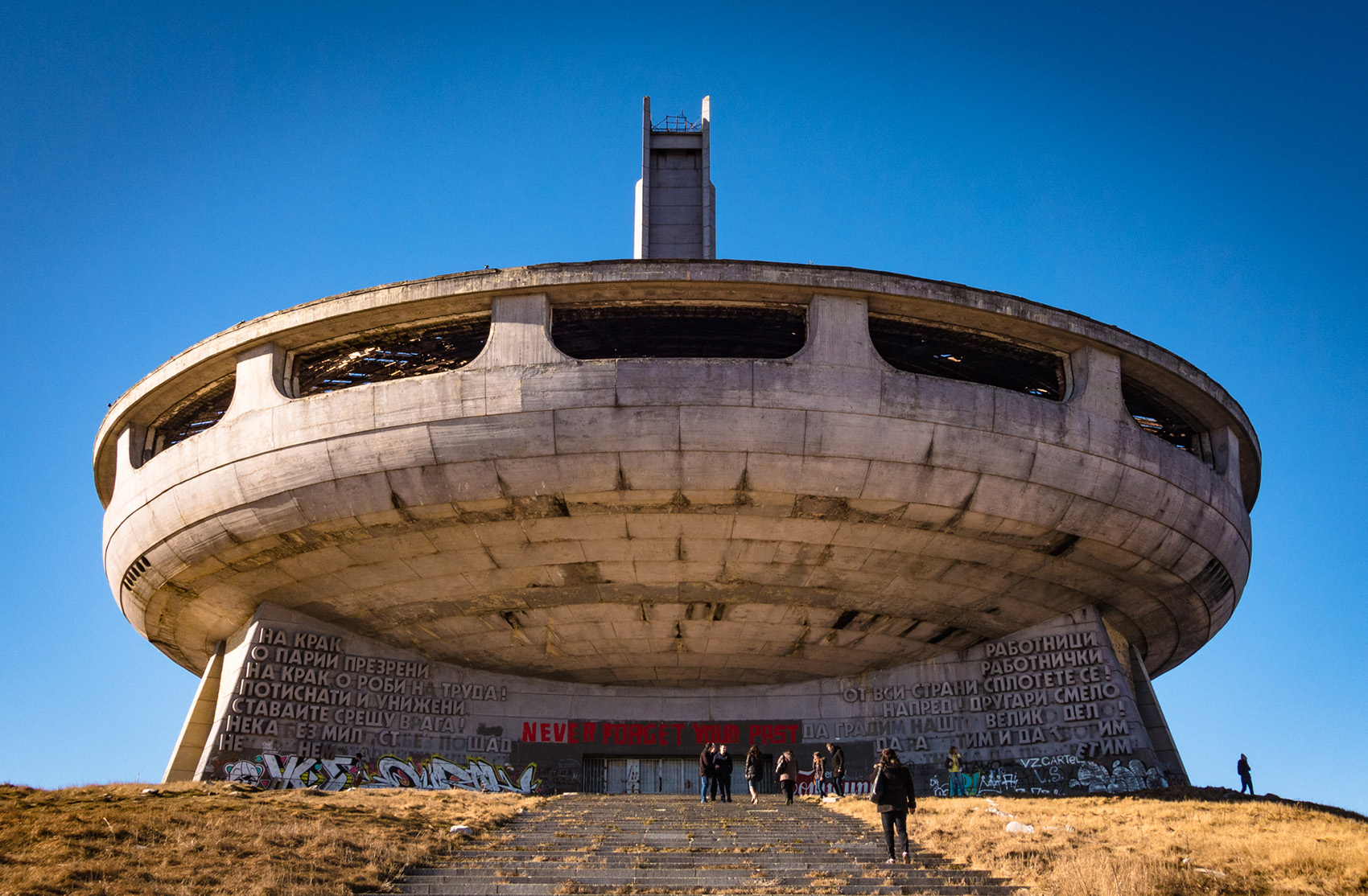 |
| Photo: EIB Institute |
A peculiar, deserted monument is located on the remote peak of Buzludzha in the Bulgarian mountains.
In 1868, a battle took place on the peak itself between the Bulgarians and the Turks. To plan for Bulgaria's socialist future, a group of socialists led by Dimitar Blagoev convened atop the peak in 1891.
The government in charge at the height of Soviet influence chose to build a monument honoring socialist communism in order to commemorate these events.
Commencing in 1974, the monument was constructed by Bulgarian Army units with the aid of multiple artisans who created the monumental statues and murals. The arena intended for official events and festivities was adorned with large portraits of Marx and Lenin. A red window in the shape of a star, dedicated to Soviet Russia, blazed above it all.
Following the overthrow of the government in 1989, the location was deserted and vulnerable to vandalism. The public cannot access the main entrance because it has been sealed. On the right side of the building, there is still a small entrance to the structure. The majority of the artwork within the Buzludzha Monument has been removed or destroyed, but the concrete structure is still intact and resistant to the elements.
Plans are in place to preserve and restore the monuments after a preservation team succeeded in getting it listed as one of Europe's seven most endangered historical sites.
Since a guard has been stationed there around-the-clock, breaking and entering is now impossible. It is still encouraged for visitors to go outside and take in the distinctive architecture.
1. Maunsell Sea Forts
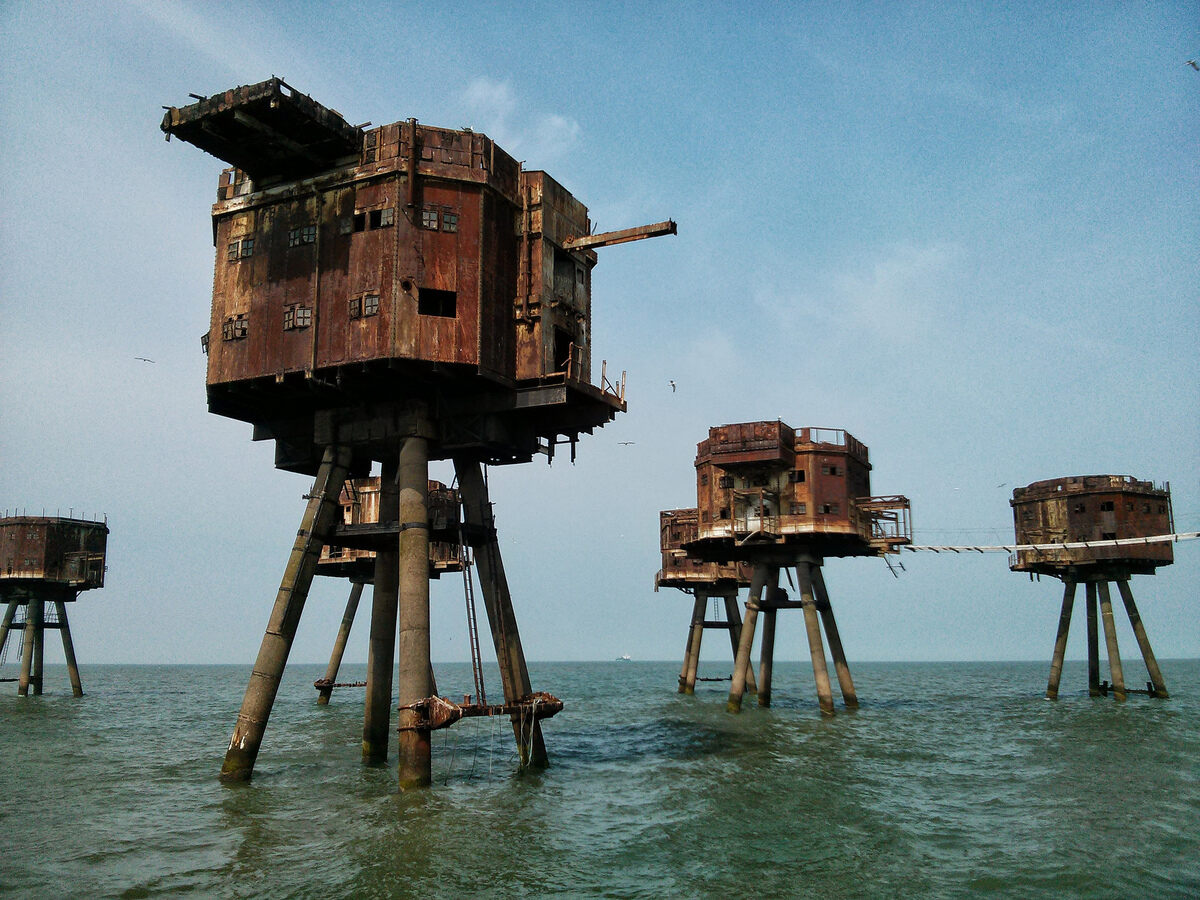 |
| The Thames Forts in 2013 STEVE CADMAN/FLICKR (CREATIVE COMMONS) |
Built in 1942 as a component of the Thames Estuary defense system, each anti-aircraft tower-fort is comprised of a group of seven stilted buildings encircling a central command tower. Catwalks connected the buildings when they were in use. The forts were designed by Guy Maunsell, a British civil engineer who went on to become famous for his innovations in concrete bridge design. They were built on land and then moved to their homes in the water. There were originally three of these forts, but Redsands Fort and Shivering Sands Fort are the only two that still stand.
The forts had a prosperous wartime career before being decommissioned in the 1950s. The Nore Army Fort was demolished in 1959–1960 after suffering significant damage from a storm and a ship strike. The remaining deserted forts were infamously taken over as pirate radio stations in the 1960s and 1970s. The Roughs Tower, another Maunsell design, is a nearby Navy fort that is home to the micronation Principality of SeaLand. The army forts are all deserted now.
Shivering Sands was not as well preserved as Redsands Fort, so in 2003 the Project Redsands organization was established to preserve and potentially restore it. More recently, in 2005, artist Stephen Turner spent 36 days at Shivering Sands Fort, which is approximately equivalent to how long a WWII serviceman would have stayed there. He wrote a book and a blog about the project, characterizing it as an isolated experiment. Redsands was the location of The Prodigy's 2008 music video shoot.
"Access for the men posted to these forts was via an entrance at the base of the platform," states Underground Kent, a group devoted to researching and recording the military installations in Kent. Although they are in extremely bad shape, some of the ladders that the men would have used can still be seen today. It is actually quite dangerous to try to reach these forts; it is best to observe them from a boat at a safe distance.
These days, the forts are in various states of disrepair, and it's probably not a good idea—if not illegal—to try to enter them. On a clear day, you can see them from Shoeburyness East Beach or from a boat.
 Top 10 Most Handsome Billionaires In The World Today Top 10 Most Handsome Billionaires In The World Today Is there also beauty behind money? Are the rich men also handsome and attractive? The answer is definitely yes. Check out the 10 Most Handsome ... |
 Top 10 Most Beautiful Places to Visit Around the World Top 10 Most Beautiful Places to Visit Around the World What is the most beautiful place on earth? From countries all around the world, these are our top 10 most beautiful places to visit. |
 Top 10 Most Expensive New Cars In The World Top 10 Most Expensive New Cars In The World Discover the most expensive new cars in the world and their special features. |
 Top 10 Most Handsome Arab Men In The World Top 10 Most Handsome Arab Men In The World Arab men are famous for their beauty. Who are the most handsome Arab men in the world? Let’s explore. |


























